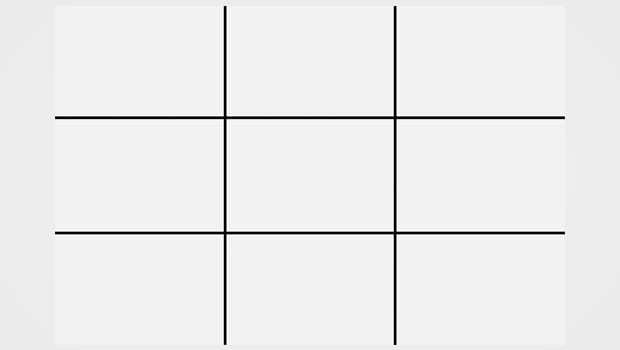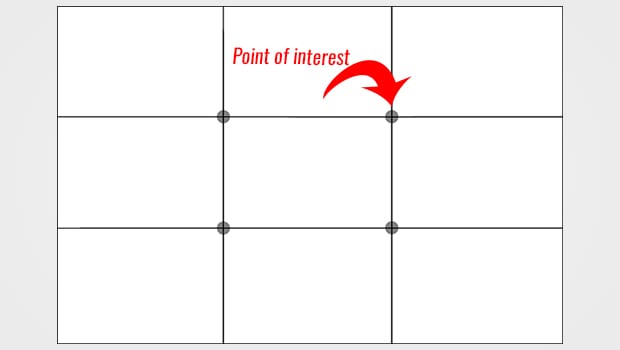Do you want to know how to use the rule of thirds in your photography? The rule of thirds is an important and fundamental concept that you need to know in order to compose visually interesting photographs. In this article, we will share how the rule of thirds works in photography and how you can use it in your own photos.
What Is the Rule of Thirds?
The rule of thirds is a basic principle designed to help photographers achieve balanced, interesting photographs.
According to the rule of thirds, you can imagine that your field of view is divided into three sections both vertically and horizontally. This forms an imaginary grid over your image, composed of nine individual boxes:

Many digital cameras have the option to display this grid horizontally and vertically over your display as you are taking a shot.
The rule of thirds recommends that you place your subject at the top, bottom, left, or right area to make a good composition. Essentially, you should place your subjects so that the middle area of the grid stays empty.
The middle area, or the middle box, is not the best place for your subject.
How Does the Rule of Thirds Work?
On this imaginary grid, there are four lines (two horizontal and two vertical) that intersect to form the nine squares. These lines intersect at four points, which are commonly known as “points of interest.”

These intersection points, or points of interest, help you to manage the placement of your subject on the top, bottom, left, or right of the photograph, so it looks more interesting and balanced to the eye of the viewer.
That’s because, as studies show, people’s eyes naturally gravitate towards one of the points of interest rather than the center of the shot.
When you use the rule of thirds to place your subject, your composition will work in harmony with the way that people naturally look at a photo.
In this image below, for example, we wanted the viewer’s eye to be drawn to the sun as the main focal point of the photograph. So, we kept the focus on the sunrise by placing it on one of the four points of interest.

Other than the sun, the grass also pops out in this photo because it’s on the bottom-right point of interest.
More Examples Using the Rule of Thirds
In this is next example, we placed the subject of the photo in the rightmost section created by the vertical grid lines. That way, you draw the viewer’s attention to the structure in the right of the photograph.
The sunlight also adds interest to the image on the top-left horizontal line.

For more about how to use natural sunlight in your photographs, check out our guide on everything you need to know about photography lighting.
Both of the above examples show the grid lines, but you may not always have the ability to display grid lines as you are lining up your photograph. But, it is possible to imagine the rule of thirds grid onto your image to create something interesting and balanced, and we’ll show you how.
In this landscape photography portrait, the man plucking the tea plants is on the right-hand side of the image. (Remember: the center of the frame is not a good place for the subject.)
Try to imagine the placement of the vertical line on the right (it’s directly over the man):

Look closer and you’ll see another man in the top-left area doing the same work in the opposite direction, which makes him something of a “reverse shadow” of the main subject. Because the two men are located on opposite points of interest using the rule of thirds, this creates an interesting composition.
Conclusion
You should always think about the points of interest when capturing a photograph. It’s a simple concept to learn, although it may take a bit of practice to master while shooting. And, once you’ve gained a mastery of the rule of thirds, you can begin experimenting on breaking the rule in your work.
We hope this article has helped you to learn how does the rule of thirds work in photography as a composition technique. If you found this walkthrough helpful, then you may also want to check out our guide on how to get shallow depth of field in your photos.
If you liked this article, then follow us on Facebook and Twitter for more free photography tips, photo editing tutorials, and more. You can also subscribe to our newsletter on the right.
















I am convinced, thanks!
Wonderful! And thank you for reading 🙂
Very helpful. Thanks
I used to try cropping in PhotoWorks before but I always failed to get the right crop. Your tutorial made the things clear to me, thanks.